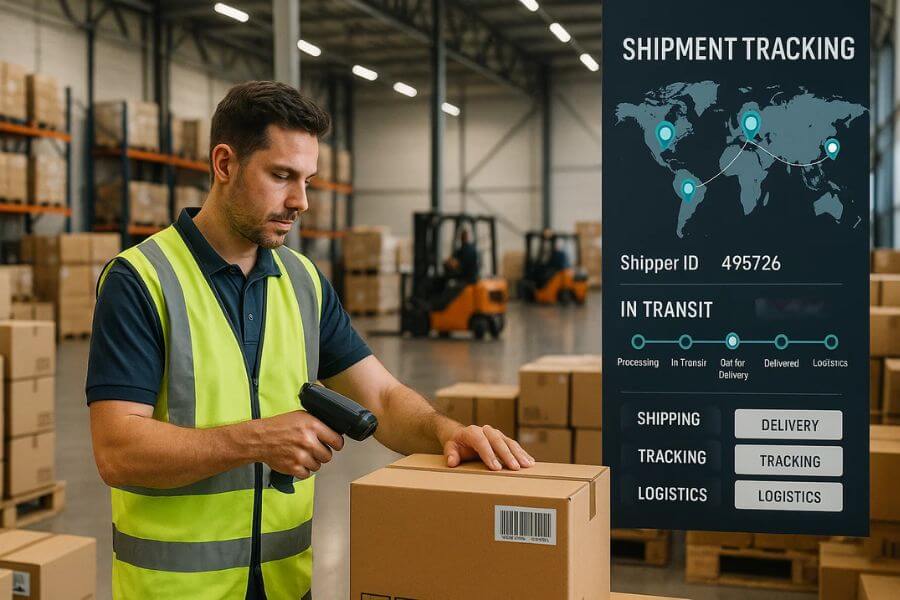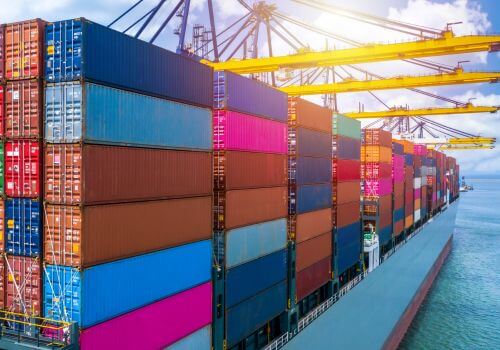In the fast-paced world of logistics and supply chain management, precision is everything. With millions of shipments moving every day across air, sea, rail, and road, the industry relies on strict identification systems to avoid confusion, delays, or compliance violations. Among these systems, Shipper ID plays a pivotal role.
Think of a Shipper ID as a “digital passport” for the sender of goods. It establishes a clear link between the shipment and the party responsible for initiating it. Without this identification, billing errors, customs delays, and even fraud could become rampant. For companies handling large shipment volumes, the Shipper ID becomes more than a tracking tool—it becomes a vital asset for efficiency, compliance, and customer trust.
In this guide, we’ll explore Shipper IDs in detail: what they are, how they are used, why they matter, and how businesses can manage them to gain a competitive edge. Whether you’re a manufacturer, retailer, or logistics provider, mastering the use of Shipper IDs will help you operate with greater accuracy and transparency.
What is a shipper ID?
A Shipper ID (Shipper Identification Number) is a unique alphanumeric code assigned to a company, organization, or individual that sends goods through a carrier or logistics service provider.
This identifier serves as a permanent reference point across the logistics process. For example, a carrier like UPS or FedEx assigns each account holder a Shipper ID. Once assigned, that ID is used to connect every shipment, invoice, and customs filing back to the original shipper.
It’s important to note that a Shipper ID is not tied to a single shipment, unlike a tracking number. Instead, it is tied to the shipper’s identity as a whole. This means that whether a company ships 10 packages a week or 10,000, all shipments are linked to the same Shipper ID.
Example:
- A small online clothing retailer sets up an account with FedEx. FedEx generates a Shipper ID for the retailer. Every package shipped, whether going to New York, Paris, or Tokyo, will carry this ID in the system.
- If customs authorities in Europe need to verify the origin of goods, they can quickly trace them back to the retailer via the Shipper ID.
This system ensures global traceability and accountability.
What are the key functions of a shipper ID?
The Shipper ID plays several critical roles in the logistics ecosystem. Each function contributes to smoother supply chain operations:
- Shipment identification: Every shipment must be tied to its origin. The Shipper ID ensures the carrier and consignee can identify who sent the goods. This prevents misrouting, lost cargo, or disputes.
- Billing and invoicing: Carriers use Shipper IDs to apply charges correctly. If a large corporation has multiple departments, the Shipper ID ensures invoices are billed to the right account.
- Customs documentation: International shipping requires strict customs compliance. Shipper IDs are included in commercial invoices, bills of lading, and export declarations. Customs officials use them to confirm the legitimacy of the sender.
- Data accuracy: In today’s logistics, much of the communication happens through Electronic Data Interchange (EDI). Shipper IDs ensure that data flows consistently across systems without manual input errors.
- Carrier communication: For carriers, the Shipper ID simplifies inquiries. Instead of searching through thousands of records, they can quickly look up shipments associated with the ID.
How are shipper IDs assigned?
Shipper IDs are generated and managed differently depending on who is assigning them:
1. Carrier-generated IDs
Major parcel carriers like UPS, FedEx, and DHL assign Shipper IDs when a company creates an account. These IDs are often permanent and used for everything from billing to label generation.
2. Freight forwarder IDs
In global logistics, freight forwarders assign Shipper IDs to clients for internal tracking. These IDs are used when booking cargo, preparing bills of lading, or filing customs documents.
3. Internal company IDs
Large corporations with multiple warehouses or subsidiaries often assign their own shipper IDs internally. This helps with performance tracking and shipment cost allocation at a granular level.
4. Industry-specific IDs
Certain industries require highly specialized tracking:
- Pharmaceuticals: For regulatory compliance and safety recalls.
- Automotive: To track thousands of parts moving worldwide.
- Retail/e-commerce: To simplify returns and reverse logistics.
Why are shipper IDs important in logistics?
The importance of Shipper IDs goes beyond simple identification. Their impact stretches across compliance, efficiency, and customer service.
- Traceability and accountability: If a shipment is delayed or damaged, the Shipper ID provides a clear audit trail back to the sender.
- Regulatory compliance: Authorities like U.S. Customs and the European Union require accurate shipper data. Without a valid Shipper ID, shipments may be delayed, fined, or even seized.
- Fraud prevention: Counterfeiters and unauthorized exporters often try to impersonate shippers. Shipper IDs help carriers confirm that goods are moving through legitimate channels.
- Operational efficiency: Automating shipping processes relies on standardized identifiers. Shipper IDs reduce manual data entry and minimize errors.
- Customer confidence: When customers see accurate tracking and smooth delivery, they develop stronger trust in the brand—leading to higher retention rates.
Shipper ID vs. other logistics identifiers
In logistics, multiple identifiers are used to keep goods moving efficiently across borders, carriers, and warehouses. Because there are so many reference numbers involved, it’s easy to confuse the Shipper ID with other identifiers. Understanding how they differ is crucial for avoiding costly errors in documentation, billing, and compliance.
Shipper ID vs. consignee ID
- Shipper ID: Identifies the sender—the business or individual responsible for initiating the shipment.
- Consignee ID: Identifies the receiver—the party who will ultimately receive the goods.
For example, a manufacturer in South Korea (shipper) sends parts to a U.S. distributor (consignee). The shipper’s ID and consignee’s ID will appear on the bill of lading to clearly indicate the origin and destination. This prevents confusion in case there are multiple shipments between the same two companies at once.
Shipper ID vs. tracking number
- Shipper ID: A permanent identifier tied to the shipper’s account or profile within a carrier’s system. It doesn’t change from one shipment to another.
- Tracking number: A shipment-specific identifier created for each package, container, or load.
For instance, an ecommerce brand may use the same Shipper ID for thousands of orders. But each order will have a unique tracking number that customers can use to follow its journey.
Shipper ID vs. SCAC code
- SCAC (Standard Carrier Alpha Code): A unique code that identifies a transportation company (the carrier).
- Shipper ID: Identifies the company sending the goods (the shipper).
Example: A U.S. freight broker books cargo with a carrier whose SCAC is “ABCD.” The goods originate from a shipper with Shipper ID “XYZ123.” Both identifiers appear in the shipping documentation, but they refer to different entities.
Shipper ID vs. customer reference numbers
Sometimes shippers or consignees create their own reference numbers for internal tracking, such as a purchase order (PO) number or invoice number. These differ from a Shipper ID because they are tied to individual transactions, not to the identity of the shipper itself.
How do shipper IDs work in different logistics scenarios?
Shipper IDs are versatile and play different roles depending on the type of logistics operation. Let’s explore how they are used across different scenarios:
Domestic shipping
In domestic shipping, the Shipper ID is mainly used for billing, pickup scheduling, and resolving customer inquiries. If a carrier like FedEx needs to check why a shipment was delayed, they can pull all the records linked to a Shipper ID to review shipping patterns or identify recurring issues.
Example: A bakery in Chicago shipping ingredients to multiple local stores uses the same Shipper ID for all deliveries. The carrier knows exactly which account to bill and can quickly resolve disputes if one store reports a missing delivery.
International freight
For international shipments, Shipper IDs are especially important in customs processes. They are often included on documents like the commercial invoice, bill of lading, and export declaration. Customs authorities use the ID to verify that the goods are shipped from a legitimate source.
Example: A South Korean electronics company exports smartphones to Germany. The Shipper ID appears in customs filings, ensuring German authorities can confirm the shipment’s legitimacy and compliance with EU import rules.
Third-party logistics (3PL) operations
3PL providers manage inventory, warehousing, and shipping on behalf of businesses. Shipper IDs help them keep records clean when handling multiple clients at once. By tying every shipment back to the correct client, the 3PL ensures accurate billing and avoids mix-ups.
Example: A 3PL warehouse in Los Angeles manages shipments for 50 ecommerce brands. Each brand has a unique Shipper ID in the 3PL’s system, allowing the provider to track storage costs, shipping performance, and return rates per client.
E-commerce fulfillment
In ecommerce, Shipper IDs are deeply integrated into shipping software. When a seller prints labels through platforms like Shopify or Amazon, the Shipper ID ensures the correct account is billed and the right shipper details appear on labels.
Example: A seller on Amazon FBA ships 10,000 units per month. Each shipment is tied to their Shipper ID in Amazon’s logistics system, ensuring smooth label creation, accurate carrier billing, and easy reconciliation during financial audits.
Real-world examples of shipper ID in action
Shipper IDs are not just abstract numbers—they have real-world applications across industries. Here are a few practical examples:
E-commerce retailers
Online retailers shipping thousands of small parcels daily rely heavily on Shipper IDs. The IDs ensure that carrier billing is accurate, even when order volumes spike during peak seasons like Black Friday or holiday sales.
Example: A fashion brand in New York uses UPS for all its orders. Even though each package has a unique tracking number, all shipments are tied to the retailer’s Shipper ID. This allows UPS to generate a consolidated invoice and gives the retailer visibility into total shipping costs for the month.
Automotive industry
Automotive supply chains are global and complex, with thousands of parts moving across continents. Shipper IDs help track these parts back to the original manufacturer.
Example: A Japanese auto parts supplier sends components to assembly plants in Mexico and the U.S. The Shipper ID ensures that even if multiple suppliers send similar parts, customs authorities and automakers can distinguish between them.
Pharmaceuticals
Pharmaceutical shipments are highly regulated due to safety concerns. Shipper IDs are used to maintain strict traceability, ensuring products come from verified sources.
Example: A biotech company in Switzerland ships temperature-sensitive vaccines to hospitals worldwide. Customs officials in the receiving country verify the Shipper ID to confirm that the vaccines originated from a certified, approved manufacturer.
Food and beverage
Food shipments often require compliance with expiration tracking and food safety regulations. Shipper IDs tie the goods to their origin, making recalls and quality checks easier.
Example: A dairy company in Wisconsin exports cheese to Canada. If a batch is recalled, authorities can trace it back through the Shipper ID to the exact facility where it was produced.
Cross-border trade
Shipper IDs are crucial in international trade, where multiple shipments cross borders daily. They help customs authorities verify legitimate shipments, especially in high-risk industries.
Example: A textile exporter in India ships fabrics to multiple retailers in Europe. The Shipper ID ensures each shipment is correctly attributed, reducing the risk of delays during customs inspections and building trust with European buyers.
Frequently asked questions about shipper ID
Q1: Is a Shipper ID the same as a tracking number?
No. A Shipper ID identifies the company or individual sending the shipment, while a tracking number is assigned to a specific package or shipment to trace its movement through the carrier’s system.
Q2: Do all carriers require a Shipper ID?
Not always. Large carriers like UPS, FedEx, and DHL often require Shipper IDs, but smaller regional carriers may use different internal identifiers. It depends on the carrier’s system and requirements.
Q3: Can one business have multiple Shipper IDs?
Yes. Companies with high shipping volumes or multiple business units often maintain multiple Shipper IDs to separate accounts, manage costs, and improve tracking across different locations.
Q4: Is a Shipper ID linked to customs documentation for international shipping?
Yes. Shipper IDs are often tied to customs paperwork to verify the origin of goods, ensure compliance with trade regulations, and help speed up clearance at borders.
Q5: How do I find my Shipper ID if I don’t know it?
You can typically locate your Shipper ID on past shipping invoices, carrier account profiles, or by contacting your logistics provider or carrier’s customer service team directly.
In summary, a Shipper ID in logistics is a unique identifier assigned to a business or individual shipper that carriers and logistics providers use to track, manage, and authenticate shipments throughout the supply chain.







